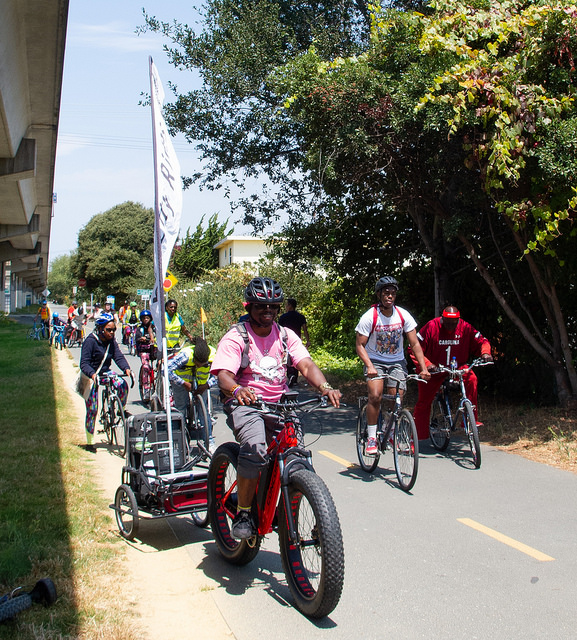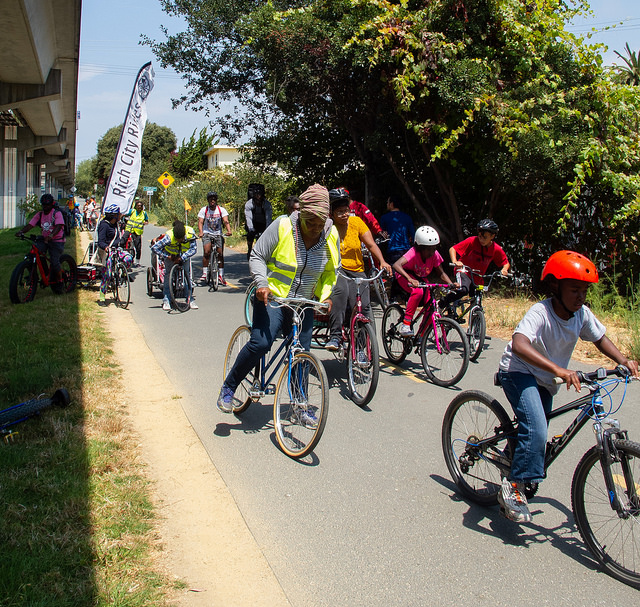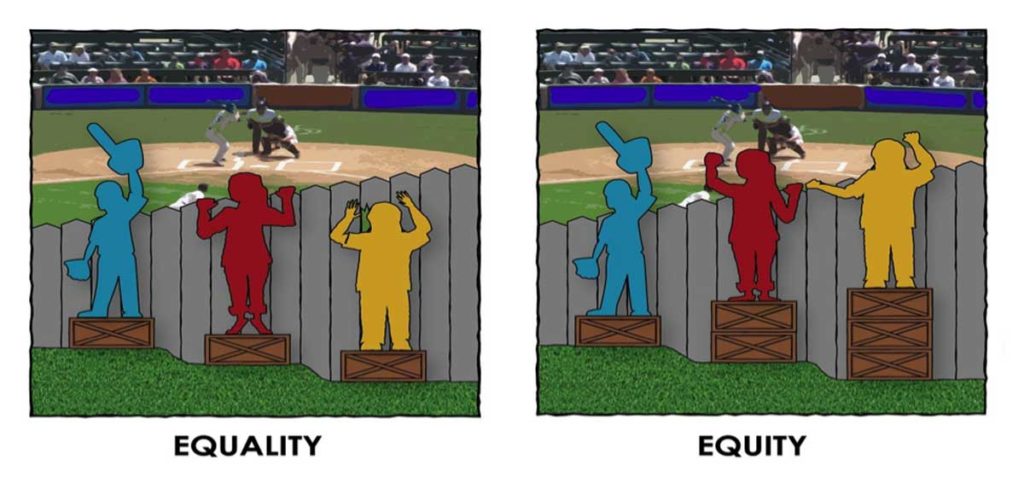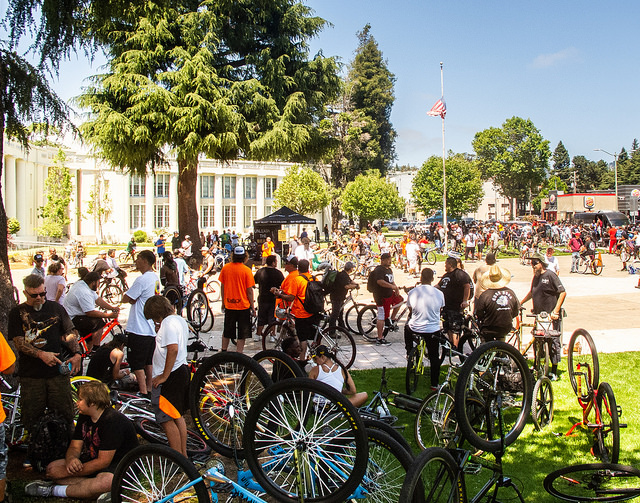Biased policing of cyclists
Two of my recent bike-related experiences came together this weekend, when Naj K. Smith of Rich City Rides (who I met leading a ride last week) got arrested in Oakland for leading a ride on First Fridays with his sound system trailer. The bike and sound system were confiscated, and he was handcuffed and spent the night in jail. He made bail but the bike is still impounded.






